Previously on The Cassandra Stays Sew Along:
- Choosing Material for the Cassandra Stays
- Making Linen Buckram
- Making your Mock-Up
- Fitting
- How to alter the Cassandra Stays pattern to be front-laced only
- Cutting Out & Basting
- Testing techniques
It’s time to sew your boning channels!
If, like me, you’re doing it by machine, that’s the work of a couple of hours.
If you’re amazing and doing it by hand, well, I hope you have a looooooong queue of podcasts, films, and TV shows to watch!
The Cassandra Boning Channels
There are a number of different ways to mark the boning channels for the Cassandra Stays. I’m going to show you my two favourites.
With both of them you only need to transfer the black ‘guide’ boning channels from the pattern. All the light grey boning channels just flow out from those:
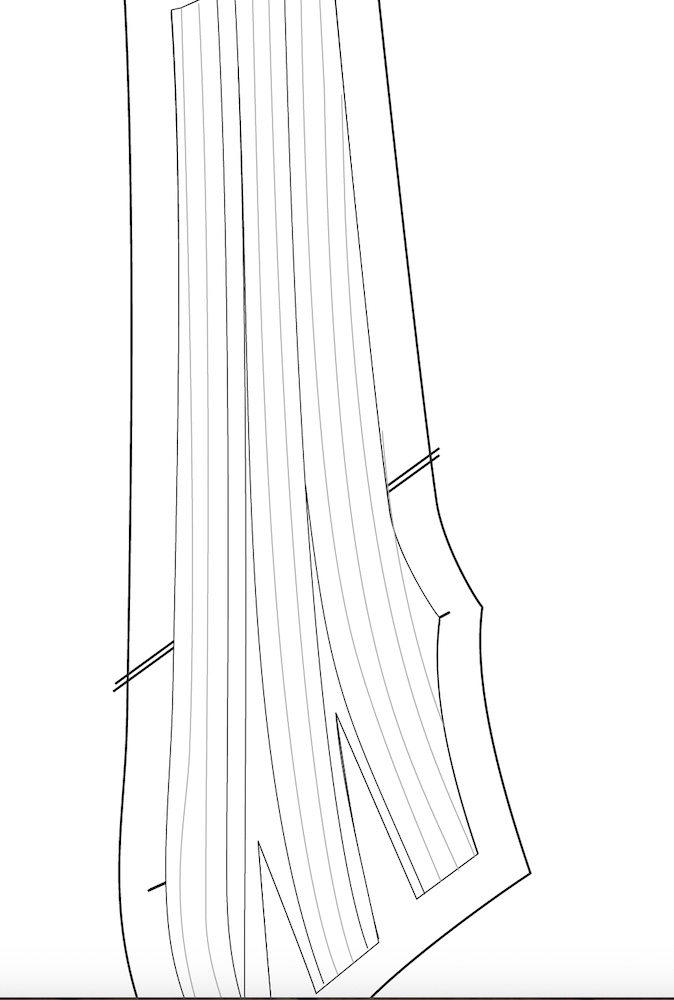
Marking Boning Channels: Technique #1
My absolute favourite way to mark boning channels is to not really mark them all. What do I mean?
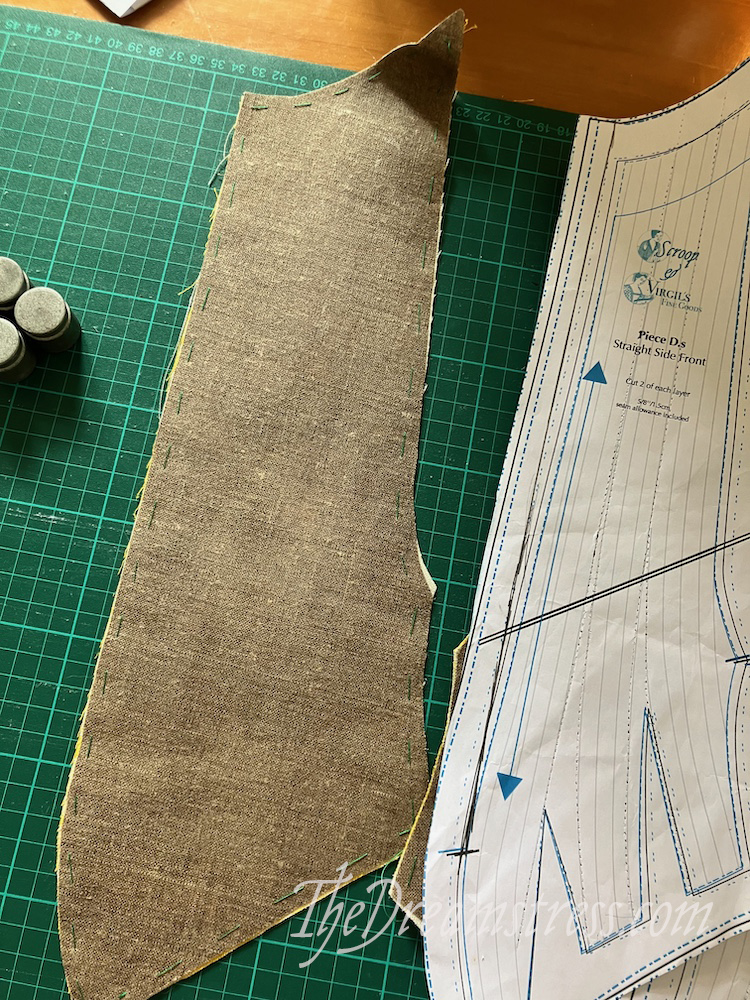
I use a needle-point pattern marker/roll marker!
On crisp, tightly woven fabrics, and many buckrams, the holes are clear enough that I can see them to follow them as channels. Ideally you’d do this technique on the right side of the fabric (it worked great on the cotton chintz I used for this pair of Augusta Stays) but the linen damask of my outer layer definitely won’t show holes.
You need to do this technique on each pattern piece just before you sew the boning channels, as the holes don’t last forever.
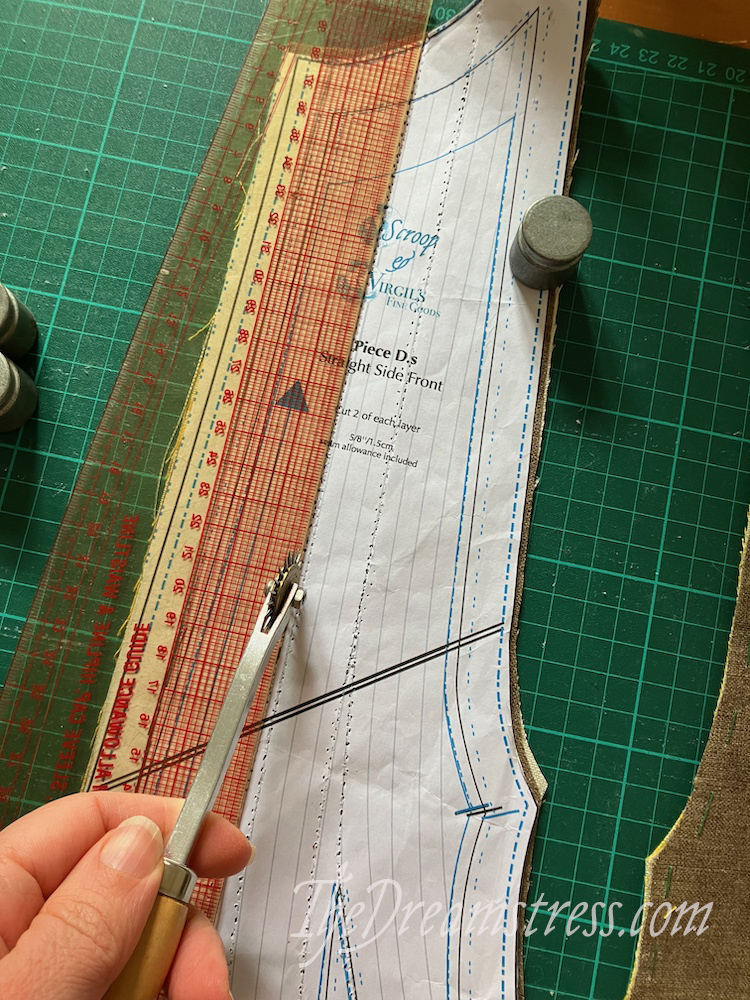
You can just see the line of holes below:
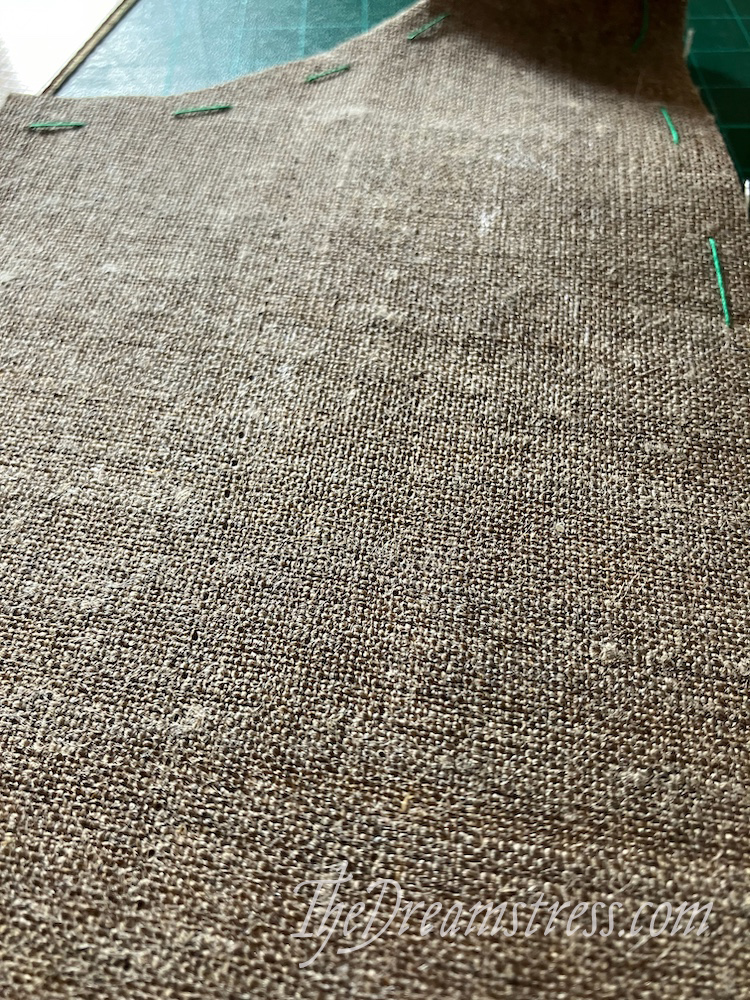
Unfortunately I didn’t think the holes were clear enough in this buckram, so I went with a different technique.
Marking Boning Channels: Technique #2
Transfer paper is my second favourite way to mark and sew boning channels. It’s what I use if the hole technique doesn’t work.
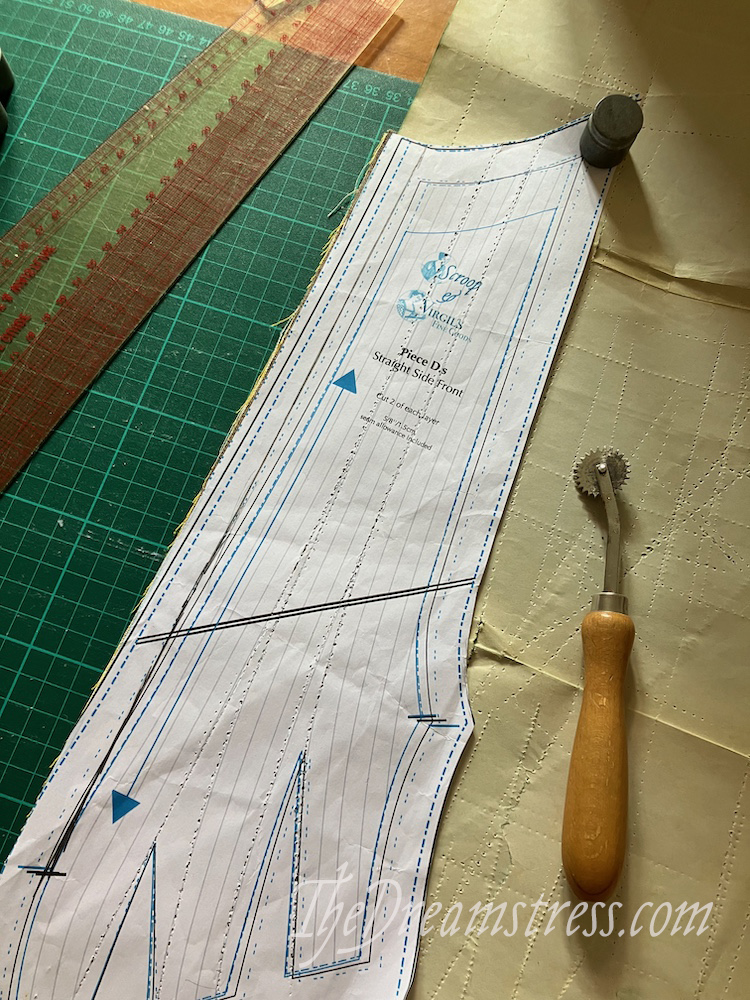
If I’m using transfer paper I mark the ‘guide’ boning channels on the wrong side of the stays.
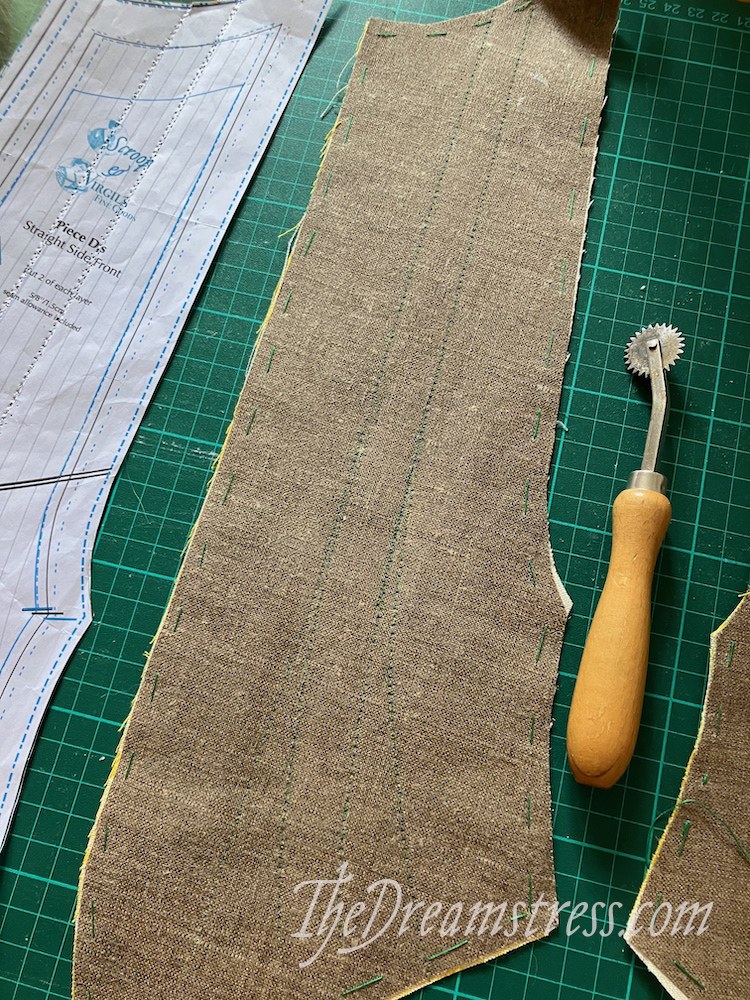
Then I sew along the marked lines:
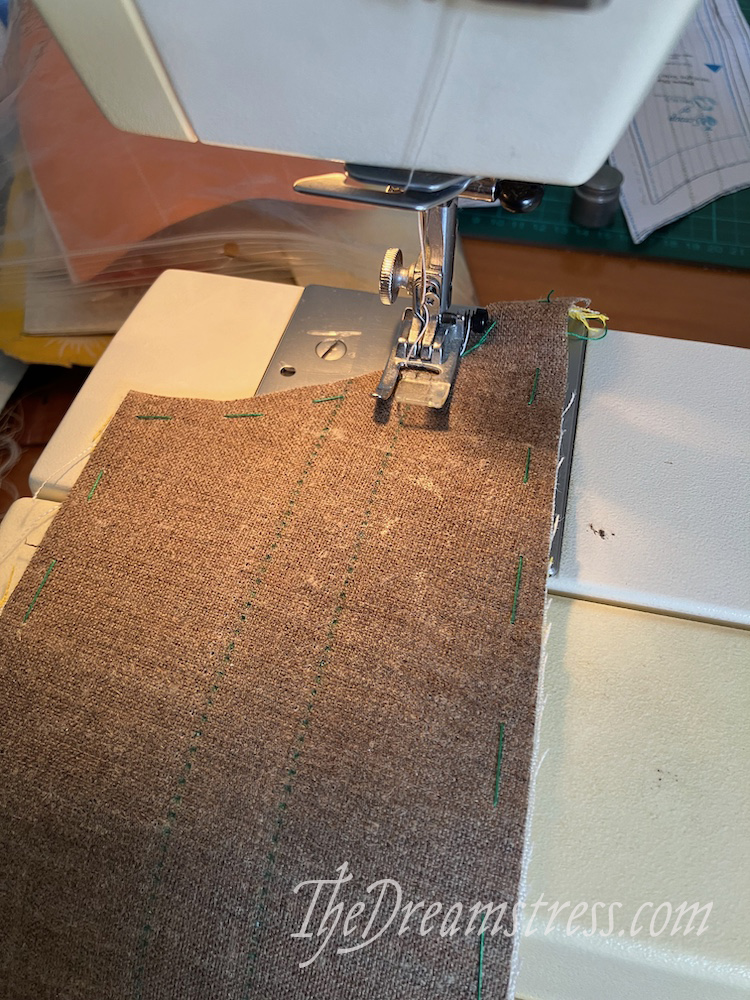
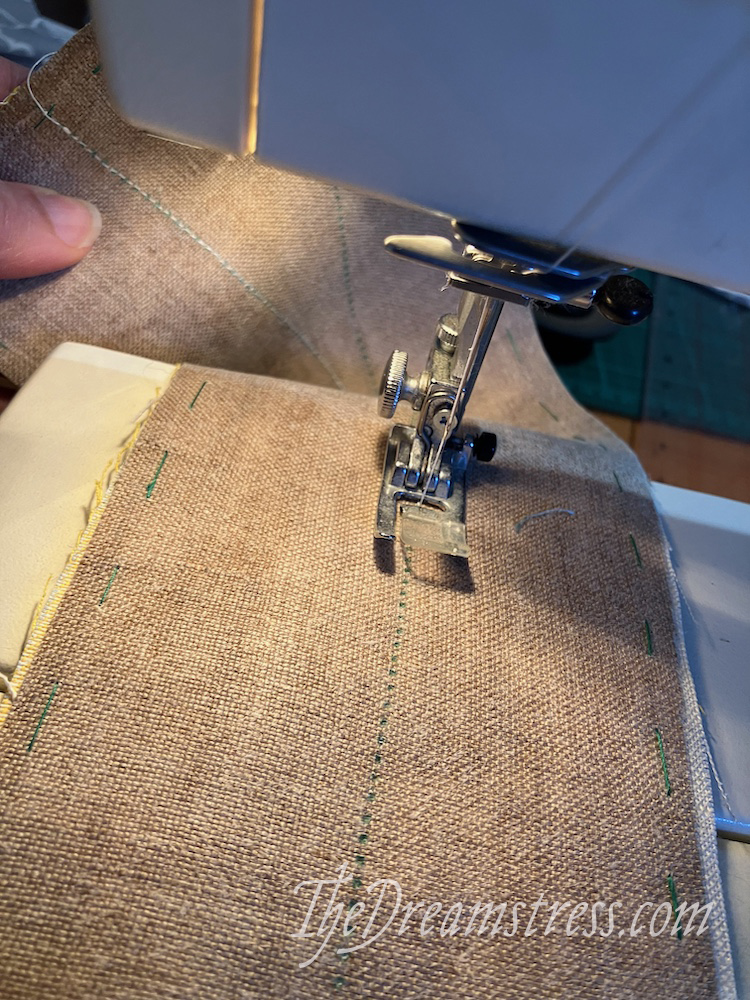
Then I turn the piece over, and sew all the other boning channels from the right side, moving the needle position until the edge of the foot is a guide to the right boning channel width:
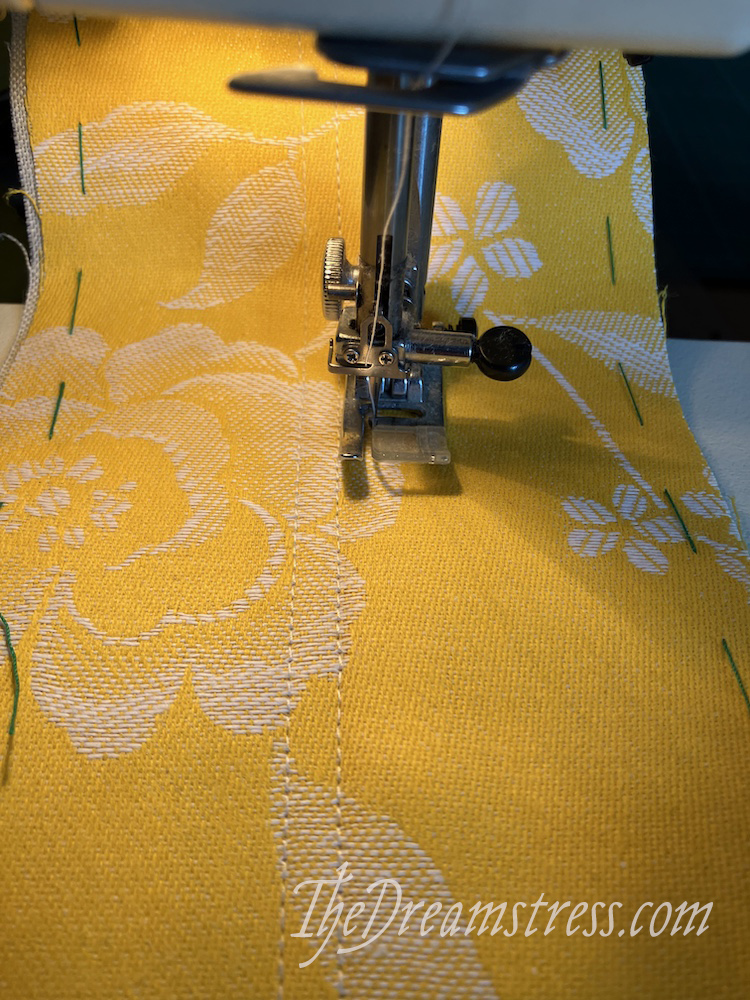
And I just keep sewing the next boning channel out from the one before:
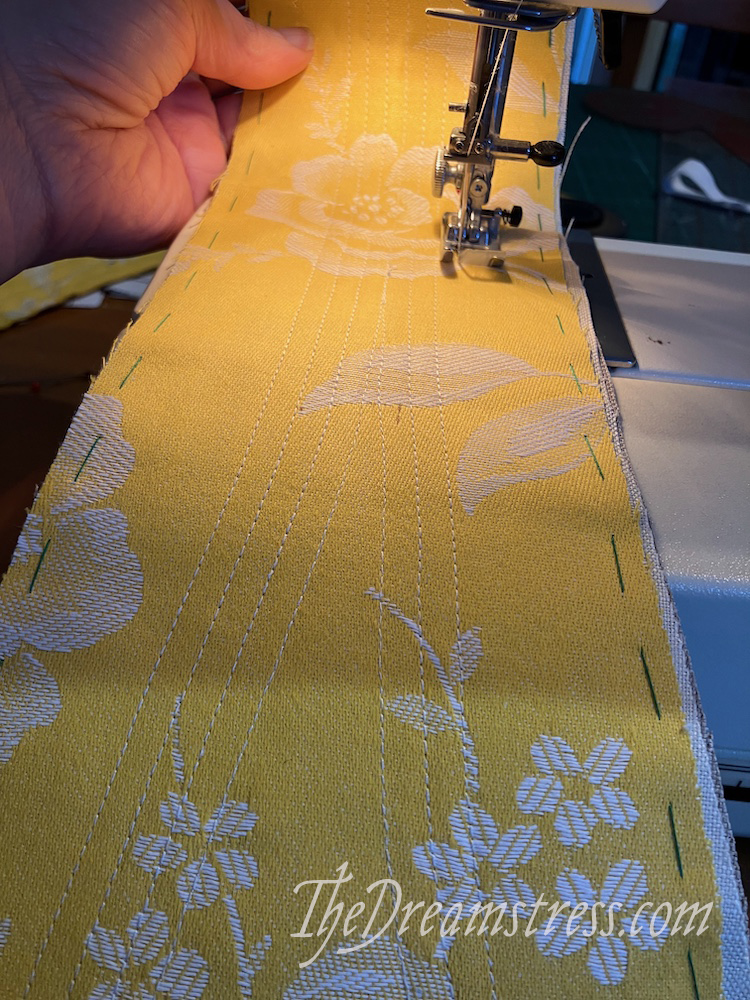
Until I’ve sewn all the channels:
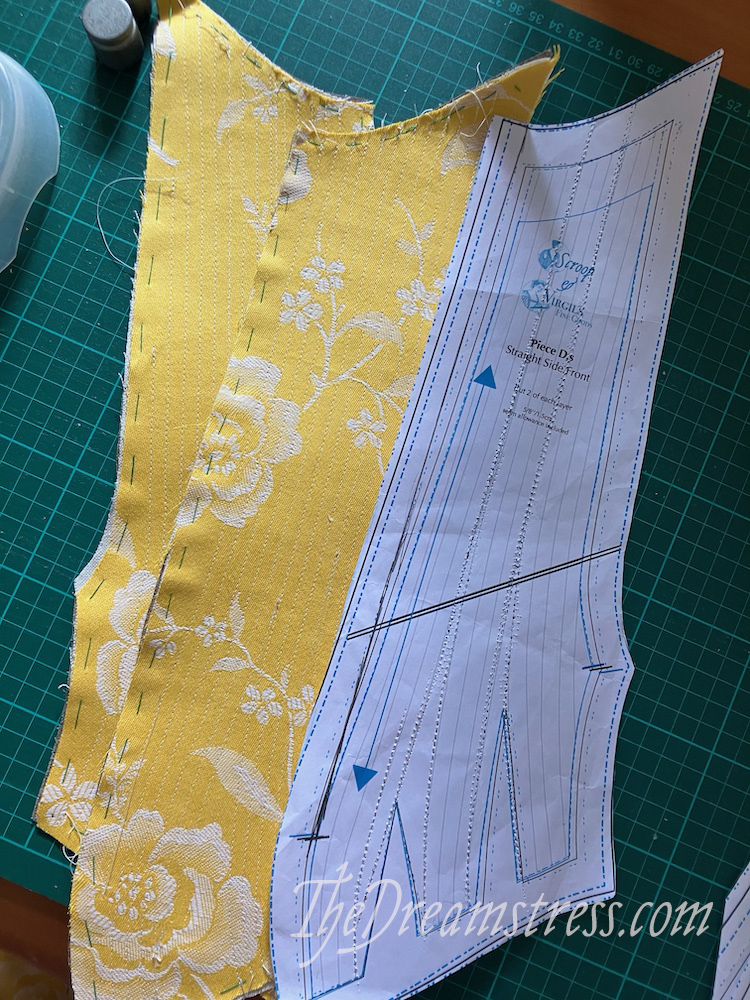
Then I do it for all the pattern pieces. And that’s the boning channel marking and sewing done!
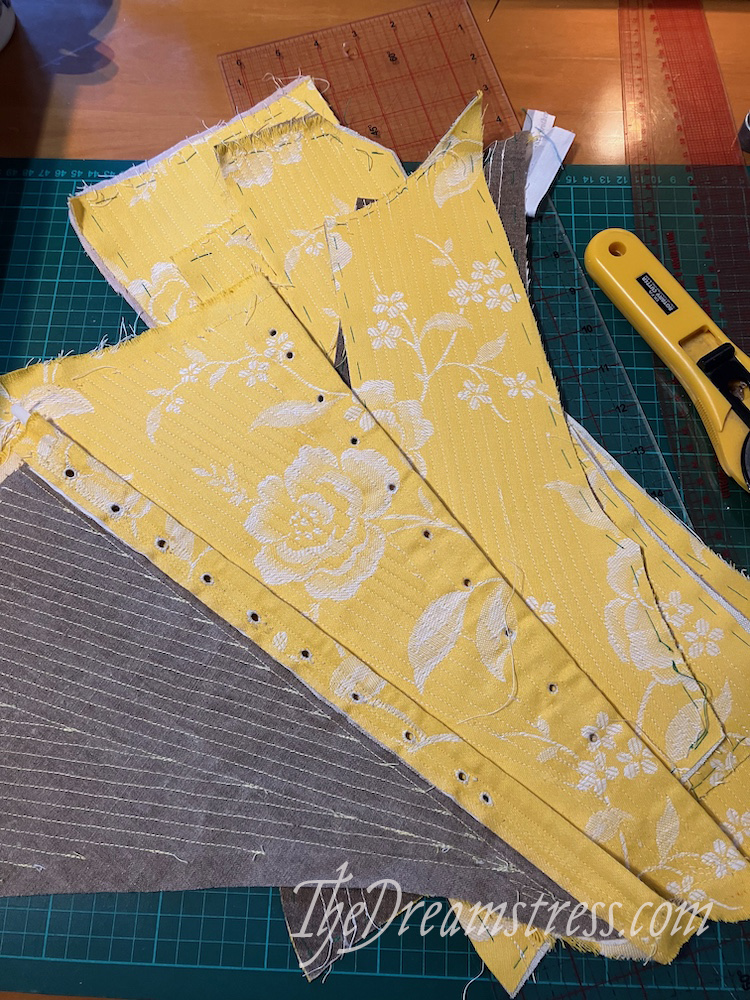
If you, like me, are combining View B and historical materials hold off on sewing the stomacher piece. The next post will be Rate the Dress, but after that I’ll show a technique for ensuring a beautiful stomacher finish if you’re mashing up historical materials and View B.
And Slut!
(And look at me. I managed to write a completely innocent post that included ‘slut’ and 19 incidences of the word ‘boning’ )

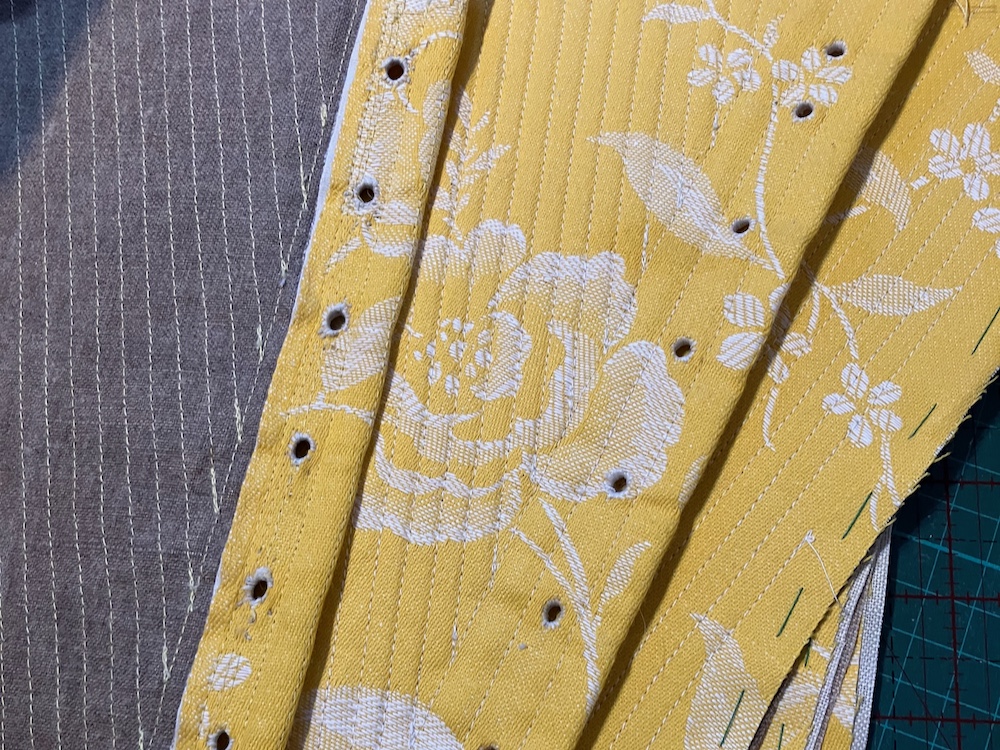
Up until quite recently, ‘slut’ was the word used for a female dog, so the list of classes at the local Agricultural and Pastoral show would include in the sheepdog section, ‘long-haired slut’ and ‘short-haired slut’.
It did cause amusement. Interesting that it was considered more polite than ‘bitch’.
Oh how fascinating! Now I’m trying to decide if being called a slut or a bitch is worse. What awful female-only insults there are
Technically the slut I used isn’t the insult slut, because it’s not pronounced the same (and obviously doesn’t mean the same thing). I just thought it was funny when I realised what I’d written
Ah, yes, but … What *does* this mysteriously pronounced word mean? And, yes, I could Google it … And, no, I don’t want to peruse those results. I did laugh at that closing anyway!
This all looks very fiddly, but “approachably fiddly” instead of the “impossibly fiddly” I would have assumed.
Slut means stop/done/the end/final in Swedish, Norwegian and Danish Like writing ‘fin’
I guess I watch too many foreign films, because I thought it was pretty widely known.
And it’s pronounced more like ‘sloot’ than ‘sluht’
I see! I had assumed it was a variation of “salut” when I read it initially; I’ve learned something!
I expect it *is* widely known, really, but we’re here having fun at an English language nexus point and we all expand in different directions, that’s all.